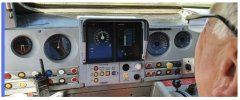I assume this is the accident in question
https://www.railwaysarchive.co.uk/documents/HSE_Southall1997.pdf
It is now quarter of a century ago. You are right that "the past is a different country where they do things differently".
The AWS failure was first reported the previous day but the maintenence depot were unable to replicate it. It was not noticed on the way to Swansea as the affected cab was then at the rear. The train could have been turned on the triangle at Swansea to get it back to London with an opedrational AWS in the leading cab, that that would have cost time and led to financial penalties.
Changes introduced as a result of Southall included a requirement for a second competent person in the cab or a severe speed limit. TPWS has also been introdced, but of course there have to be procedures in place should that fail.
Three of the carriages towards the rear of the train 42073+42074+44024, along with the rear power car, suffered only minor damage and were repaired and put back into service. The same carriages (but not the same power car) were again at the rear of the HST involved in the Ladbroke Grove crash two years later and were again eventually repaired and put back into service.
A similar coincidence of survival befell loco 91023, which was leading the train that derailed at Hatfield in 2000 (the loco was undamaged as the derailment happened further back down the train) and again largely undamaged when at the rear of the train in the Great Heck crash the following year. Subsequently renumbered 91132.


